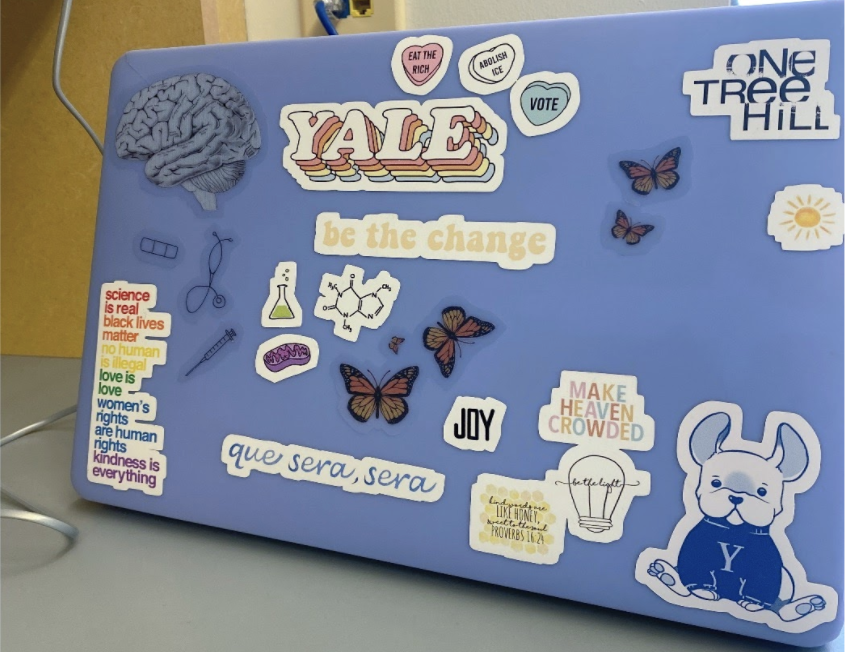On a college campus like Yale, visible declarations of people’s political affiliations are practically ubiquitous. Laptop stickers, Zoom backgrounds, backpack pins, and the like are plastered everywhere, announcing to the world what is right, what needs change, and who is fit to make that change. Though the prevalence of such items might diminish their power as radical statement pieces, their power draws on a long history in which art and activism have come together to propel social movements, identify who is a part of said movements, and make a statement about those whom the movement works against.
Art has historically been a quintessential and effective part of mobilizing people for a given cause, particularly amongst younger people. While the saying “don’t talk about politics or religion” is a common warning amongst Americans wanting to avoid uncomfortable small-talk, it would appear younger generations feel perfectly comfortable announcing their allegiances to any acquaintances who might see the back of their laptop or Zoom background. In his article, “The Art of Social Movements,” Ron Eyerman argues that “art reveals truth as the movement sees it.” This representation of truth accentuates social tensions, emphasizes the issues’ pressing nature, and gives a face to the issue itself. Looking at historic examples, it’s evident that this method is generally successful, especially in the form of iconography. The Anti-Vietnam War movement, Black Power, and LGBTQ+ activism are all easily associated with peace signs, a fist, and rainbow flags, respectively.
A consistent element across the political designs used by college students is that they are usually inexpensive, if not free. Student organizations frequently hand out free stickers at events around campus as an easy way to promote visibility for their cause, which then become plastered on students’ laptops, water bottles, and communal spaces like bulletin boards. Zoom backgrounds, like one recently popular amongst Yale students to “Defund and Dismantle the YPD,” cost nothing at all to use. For designs that students do pay for, they seldom cost more than a few dollars and become a way for young people working on a budget to show their support for a cause they cannot otherwise financially support. There also may be a connection between where students source political designs and the content of the artwork itself. Often the messages of political artwork have anti-establishment messages against capitalism, systemic racism, or big climate change contributors. These messages are reflected in these designs’ source when they come from independent artists on websites like Redbubble or even fellow student artists.
Easy recognition and legibility is another part of what makes political iconography so popular amongst college students. It allows laptop stickers and other items that display activism to be worn like badges, indicating to viewers and other college students that they are a part of a movement. As Eyerman puts it, art is particularly effective at “evoking collective feeling.” By turning an ideology or belief system into a tangible commodity, social movements feel more accessible, easily identified by more than the actual ideologies they entail. You may not be able to tell how someone feels about feminism just by looking at them, but through visible indicators, information that could only otherwise be accessed through lengthy and possibly even uncomfortable conversations is now accessible at first glance.
The positive impact of this accessibility is that conversations around political beliefs no longer have to be embedded within intimate circles of close friends or family members. Art may be the only medium that can break the barrier of discomfort around potential social tensions. However, it’s important to recognize that artistic representation and iconography can only be the starting point for more in-depth conversations about important issues facing people everyday like race, sexuality, and class.
Though having students sport designs that promote these causes is a great way to open conversations around these issues, it could do more harm than good if stickers and Zoom background take the place of calling congressional representatives, signing petitions, or other, more direct, forms of activism. Nonetheless, the choice to advertise one’s political affiliation can still be impactful and strengthen a community’s support for a cause. The desire to create art and express ourselves seems to be a fundamental part of human nature, even in things as quotidian as the clothes we choose to wear every day. Seeing someone else share a tangible version of their personal beliefs can create a sense of identity and pride for a social movement. By displaying political art on some of the most visible surfaces available to them in the 21st century, students can demonstrate that their cause is one that shouldn’t be hidden in “impolite” conversations and are worth talking about, taking action for, and building community around.

